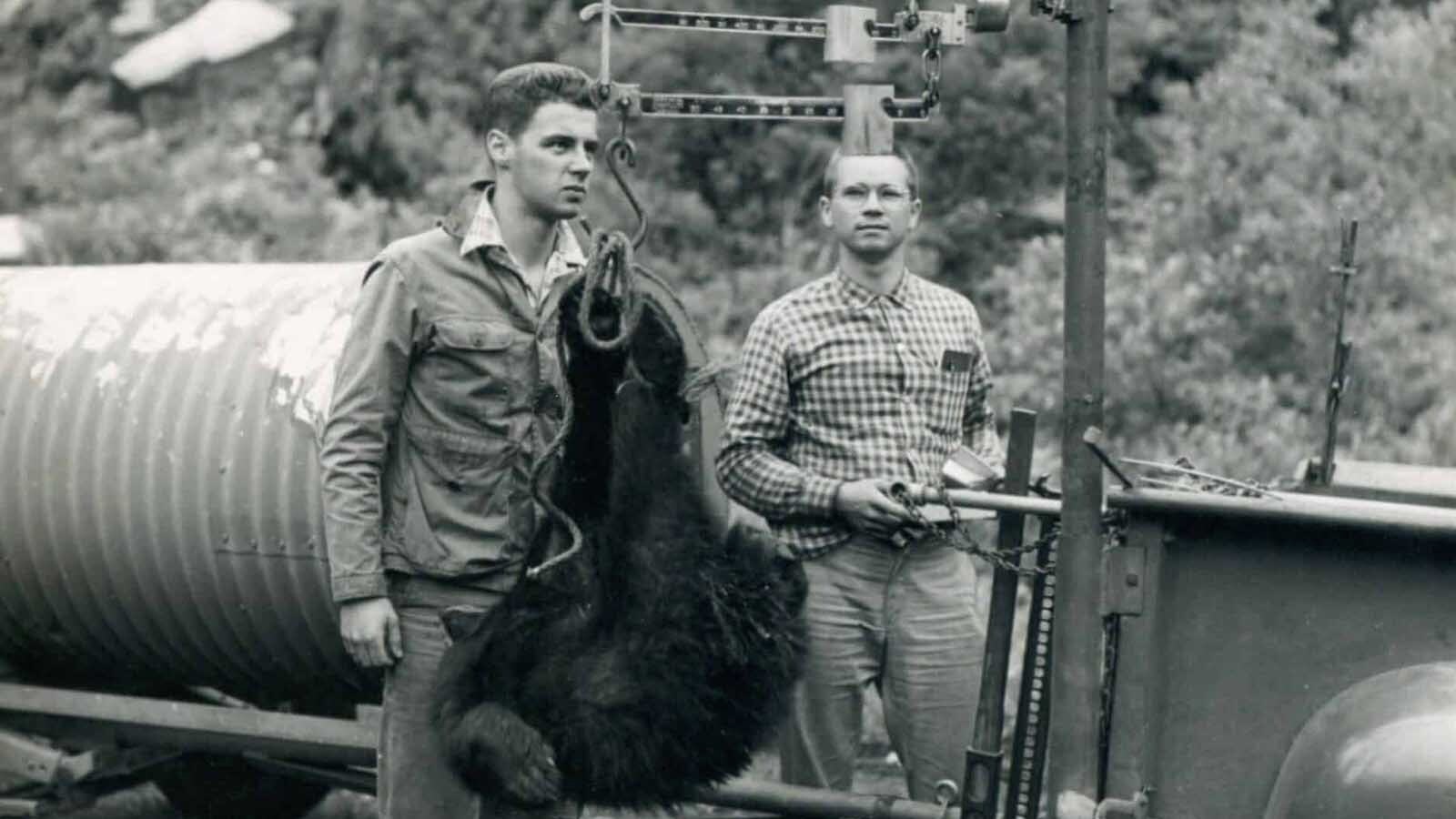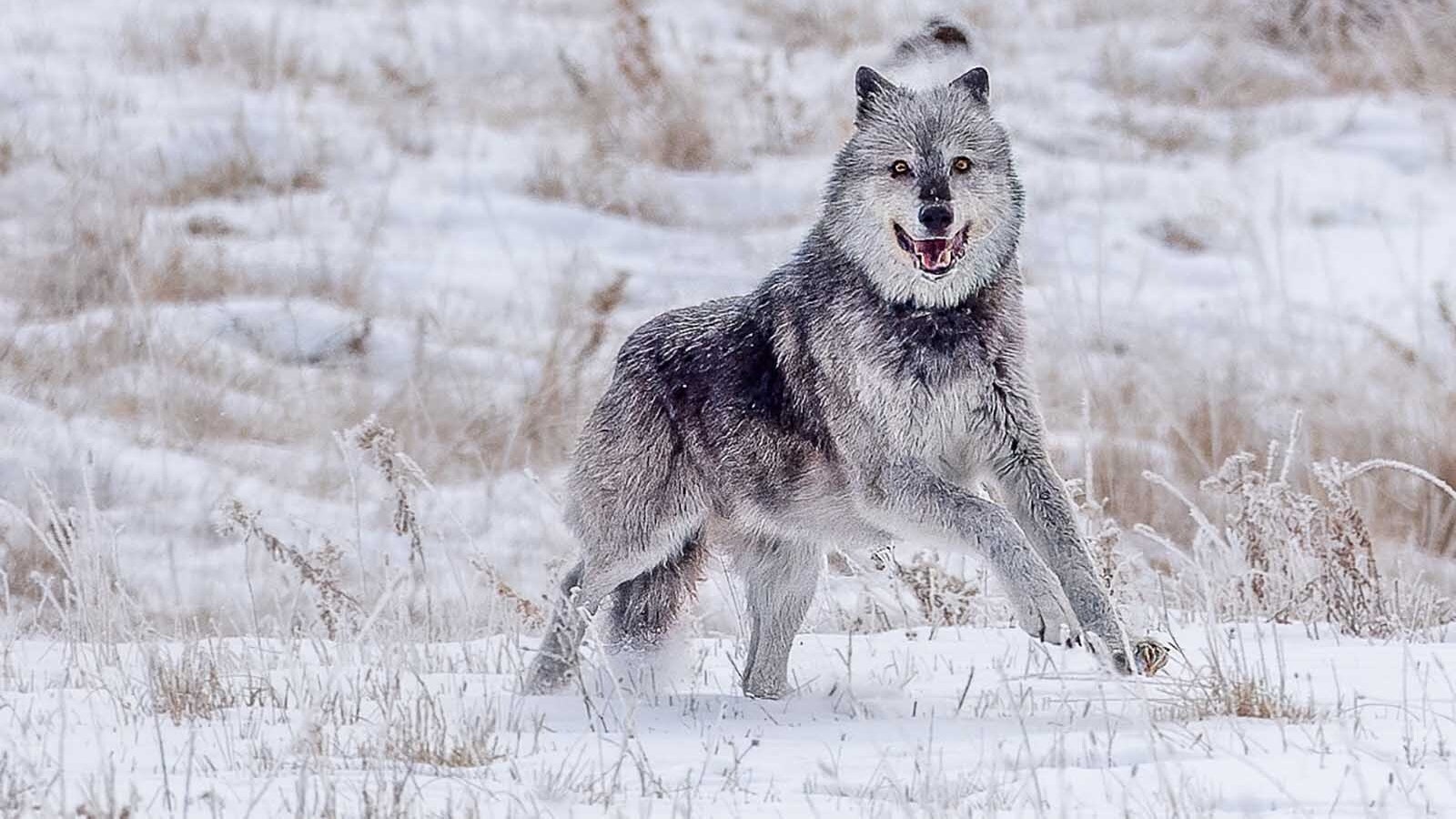One of the nation’s elite firefighting teams has moved onto the Brooks Lake Lodge scene.
It will put in place advanced firefighting strategies that will hopefully safeguard one of Wyoming’s most iconic and historical lodges, which is directly in the path of the Fish Creek Fire in northwest Wyoming.
The fire has burned more than 11,278 acres in the Bridger-Teton National Forest and is at 23% containment.
The team now at Brooks Lake Lodge is part of a national system of teams that respond to the largest and most complex fire and incident scenes. A sister team, for example, was called to help manage the scene after the 9/11 attacks.
These are also the guys who get called whenever an asset is just too precious to lose, which was the case when they were tasked with defending a U.S. Space Force facility from fire.
“We’re national,” Structure Protection Specialist Hunter Bell told Cowboy State Daily. “We’re one of 44 teams in the country like this and we’ve been together, I know there are members of the team who have been on this team for 25 years.”
Brooks Lake Lodge will be the team’s third fire scene this year, the most recent being the Retreat Fire in Natchez ,Washington, which burned 45,601 acres as of Aug. 19. That scene is 85% contained and has been relinquished to local control.
The presence of this kind of elite incident management team at a fire doesn’t necessarily mean a fire is larger or more dangerous. It’s also about the complexities of a fire and the risks to structures and assets in the area, particularly a precious asset that would be impossible to replace.
“There are five teams like us in northern Montana mostly, and northern Idaho,” Bell said. “And some other examples of where they used these management teams was Hurricane Katrina in New Orleans, the space shuttle recovery in Texas, Hurricane Sandy in New York.
“We get brought into all different types of operations. This team has gone to Canada. This team has gone to Australia over the years. So, we get around.”

Science And The Water Show
Among the first steps Bell’s crews took at Brooks Lake Lodge was to construct a drop point where the team can receive supplies.
“We’ve also established a health spot if we need to get medical evacuation going up here for whatever reason,” Bell said. “We’re building the groundwork for being in there when the fire front comes through.”
This groundwork ensures that firefighters can stay on the scene as long as necessary.
“We’re not going to ever abandon places,” Bell said. “We’ll move around as needed to do what we need to do for structures and critical infrastructure, which is radio towers, the wooden bridge decks that are here and there, and the guardrails. Those guardrails are critical.”
A typical six-by-six post costs upward of $1,000 per post to replace, Bell added.
“You start burning a mile of guardrail,” he said. “Can you imagine the cost?”
Other steps the team is taking at Brooks Lake Lodge include what Bell calls the “water show.”
“It’s more scientific than that,” Bell said. “We’re not out there spraying water all over the place with all the engines that are up there. We’ve got about eight engines that are working there with about three or four people in each.”
Those engines will draw water from Brooks Lake for use at the lodge. In addition to the fire trucks, there are also several drop tanks helping to feed all the lateral lines that lead into sprinkler heads.
“What we will do is give a little bit of water, enough water adjacent to all those structures on the ground,” Bell said. “That builds up the humidity and dampens what I refer to as the zero to 15-foot area around each cabin.”
The primary vector that causes most buildings to burn down in wildfires are fire brands that fly in and find receptive fuel in the area around the structures, Bell said, and then “we’re off to the races.”
In this case, hot shot crews that preceded Bell’s have already removed as much fuel as possible from the scene in a 300-foot radius around the lodge. That has also included limbing trees 5 to 6 feet off the ground to prevent them from catching fire.
With little fuel to work on, and water keeping everything damp and humid, that should knock out most of the risk to Brooks Lake Lodge’s structures.
The remaining 20% of risk comes down to the structures themselves, and Brooks Lake Lodge has a special challenge. Its wood shake-style roofing system is part of its historic charm, but it is particularly tough in a wildfire environment.
“That whole roof deck is receptive fuel,” Bell said. “So, they’re also trying different angles of approach to get water from the sprinkler heads up onto those roof decks.”
Moving Outward
Bell estimated that his crews will finish most of its setup and prep work Monday or midday Tuesday.
His Brooks Lake Lodge crews will then begin branching out east and west on Highway 26 to help other crews Bell has working to protect other structures, like the homes in the Pinnacle area of the Shoshone National Forest, as well as other critical infrastructure.
While Bell’s crews are working on setting up defensive operations, another division of the overall team has crews working to slow the fire’s advance and establish perimeter control.
But if, at any time, fire begins to threaten structures, there are several crews from that division that will collapse and come in to help bolster his defensive operations, as long as needed, Bell said.
“We’ve all been together for a long time,” Bell said. “And we kind of get each other’s capabilities, strengths and weaknesses, and everybody does what needs to be done.”
Bell estimated there are more than 100 structures in the path of Fish Creek Fire that his team is working to defend. That may sound like a lot, but it’s not the most structures Bell’s crews have been called upon to defend.
“This load is not huge,” he said. “Earlier this summer, I was on a different fire in New Mexico. Down there we had over 6,000 structures to do.”
Bell does have a soft spot for Brooks Lake Lodge, though. He told Cowboy State Daily that’s because he lives in a 100-year-old log structure in northern Minnesota.
“I understand the historical context of what we’re dealing with on this 100-plus-year-old Brooks Lake Lodge,” he said. “And a lot of people on my team understand it.”
Renée Jean can be reached at renee@cowboystatedaily.com.





